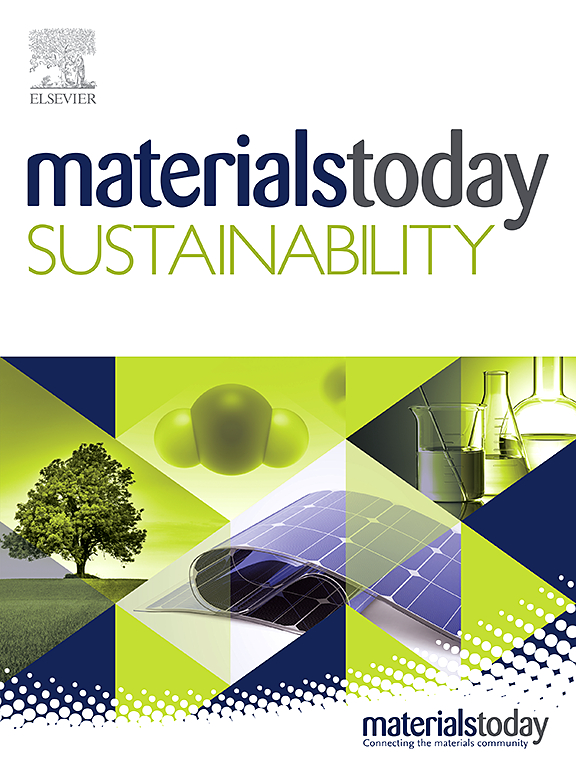Enhanced visible light utilization of BiOI/BiOBr/Bi composite catalytic materials for photocatalytic degradation of TC and reduction of Cr(Ⅵ)
IF 7.1
3区 材料科学
Q1 GREEN & SUSTAINABLE SCIENCE & TECHNOLOGY
引用次数: 0
Abstract
The rational design and construction of semiconductor photocatalytic materials are important significance for efficient utilization of solar energy and enhancement of photocatalytic activity. In this study, composite photocatalytic materials modified with Bi on the surface of BiOI/BiOBr heterojunction were successfully constructed based on the current mature electrostatic spinning technology by using solvothermal and in-situ reduction methods. The successful preparation of BiOI/BiOBr/Bi composites was confirmed by a series of characterization methods. The composite photocatalyst was applied to the degradation of pollutants, and by adjusting the addition ratio of different substances, it was found that the photocatalytic composites prepared with the addition of 0.125 mmol NaBH and the ratio of I/Br of 3:1 showed the best performance. The degradation efficiency of the catalyst for tetracycline hydrochloride (TC) at 10 mg/L reached 98.4 % after 180 min of visible light irradiation, and the high degradation performance of the material was maintained after five cycles. Meanwhile, the reduction efficiency of the material for Cr(VI) was 98.2 % after 100 min of visible light irradiation. Free radical trapping experiments demonstrated that photogenerated holes (h) and superoxide radicals (•O) are the main active substances for photocatalytic degradation of TC. Due to the partial reduction of Bi, the absorption of the catalyst in the near-infrared region was enlarged, which enhanced the photothermal effect of the whole material and further improved the catalyst activity.提高 BiOI/BiOBr/Bi 复合催化材料在光催化降解 TC 和还原 Cr(Ⅵ) 过程中的可见光利用率
合理设计和构建半导体光催化材料对于高效利用太阳能和提高光催化活性具有重要意义。本研究基于目前成熟的静电纺丝技术,采用溶热法和原位还原法,成功构建了在 BiOI/BiOBr 异质结表面修饰 Bi 的复合光催化材料。一系列表征方法证实了 BiOI/BiOBr/Bi 复合材料的成功制备。将该复合光催化剂应用于污染物的降解,通过调整不同物质的添加比例,发现添加 0.125 mmol NaBH、I/Br 的比例为 3:1 时制备的光催化复合材料性能最佳。在可见光照射 180 分钟后,催化剂对 10 mg/L 盐酸四环素(TC)的降解效率达到 98.4%,并且在 5 个循环后仍能保持较高的降解性能。同时,在可见光照射 100 分钟后,该材料对六价铬的还原效率为 98.2%。自由基捕获实验表明,光生空穴(h)和超氧自由基(-O)是光催化降解 TC 的主要活性物质。由于 Bi 的部分还原,催化剂在近红外区域的吸收增大,从而增强了整个材料的光热效应,进一步提高了催化剂的活性。
本文章由计算机程序翻译,如有差异,请以英文原文为准。
求助全文
约1分钟内获得全文
求助全文
来源期刊

Materials Today Sustainability
Multiple-
CiteScore
5.80
自引率
6.40%
发文量
174
审稿时长
32 days
期刊介绍:
Materials Today Sustainability is a multi-disciplinary journal covering all aspects of sustainability through materials science.
With a rapidly increasing population with growing demands, materials science has emerged as a critical discipline toward protecting of the environment and ensuring the long term survival of future generations.
 求助内容:
求助内容: 应助结果提醒方式:
应助结果提醒方式:


